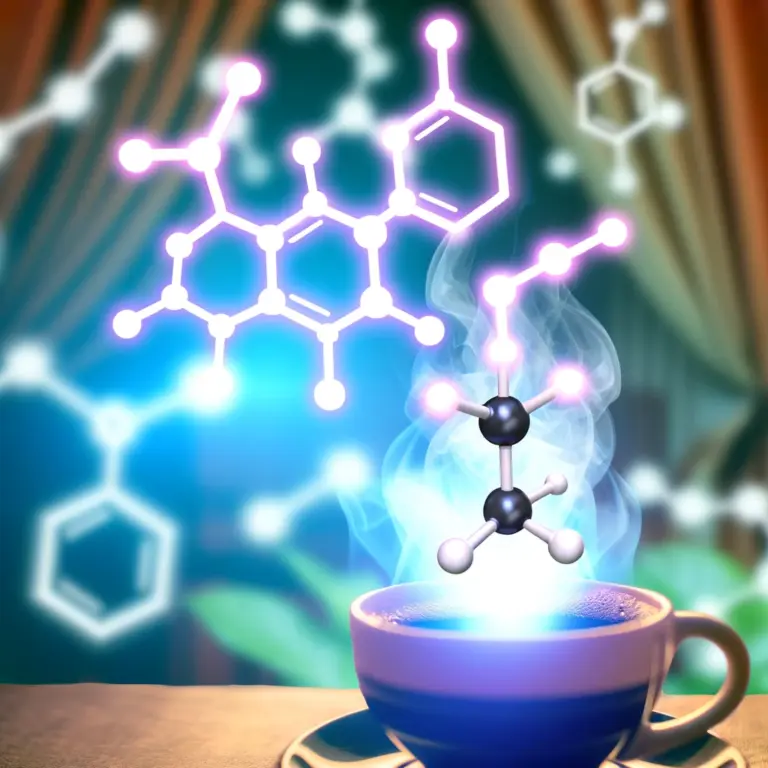Unlocking The Secrets Of Trigonelline: A New Dawn In Diabetes Management?
In the quest to tame the complex beast that is diabetes, one unlikely hero might just be poised for a breakthrough: trigonelline. A lesser-known plant alkaloid; this compound has been quietly showing promise in laboratories around the world as it takes on diabetic complications with intriguing finesse.
Holding a wealth of experience in exploring nature’s pharmacopoeia, my journey has taken me deep into the realm of bioactive compounds where I’ve witnessed first-hand trigonelline’s potential dance between science and health.
This nifty molecule not only packs a punch in managing blood sugar levels, but also comes loaded with neuroprotective effects that could revolutionise our approach to central nervous system diseases—a tantalising prospect indeed! With evidence supporting its role in reducing risks from bone fractures to cognitive decline, we’re on the cusp of possibly rewriting diabetic care strategies.
Stay tuned—this may just be your cup of (fenugreek-infused) tea..
What is Trigonelline?
Trigonelline, an intriguing plant alkaloid often overshadowed by its more famous cousins, is quietly staking a claim in the realm of healthcare. Nestled within the seeds of fenugreek and other green legumes, this compound has begun to intrigue scientists with its potential for managing diabetes – but that’s just the tip of the iceberg..
Description
Trigonelline is a special type of alkaloid found in plants. Think of it as a natural compound that could be really good for our health. It’s mainly in coffee and fenugreek seeds, which many people have every day without knowing the benefits hidden inside them! This alkaloid isn’t just sitting there; it actually does powerful things for our bodies.
For example, it helps make more niacin or Vitamin B3 – that’s super important for keeping us healthy.
Scientists are excited because this plant chemical might help folks who have diabetes. It offers promise in fighting diabetic nephropathy—this is when high blood sugar damages kidneys—and can also improve how the body uses insulin, which makes it a star player in potentially managing diabetes better.
Plus, trigonelline has these cool effects where it protects nerves and brain cells, so researchers think it could keep central nervous system diseases at bay too! With its antioxidant and anti-inflammatory powers, we’re looking at one mighty molecule from nature’s pharmacy.
Sources
Trigonelline is a special substance that can help manage diabetes. It comes from different plants and even your morning cup of coffee.
- Coffee beans: The biggest source of trigonelline is coffee, especially Coffea arabica. When you drink a cup, you get this helpful chemical.
- Fenugreek seeds: These small seeds are not just for cooking; they pack a lot of trigonelline too.
- Garden peas: Sweet and green, these tiny veggies have some trigonelline.
- Hemp seed: Often used in health foods, hemp seeds offer a dose of this useful compound.
- Oats: A bowl of warm oatmeal has more than just fibre; it contains trigonelline as well.
- Sunflower seeds: Snacking on these little seeds can give your body some trigonelline.
Potential Therapeutic Benefits
Diving into the realm of trigonelline, we’re greeted with a suite of therapeutic promises that go beyond mere whispers in scientific corridors. It’s a compound holding potential keys to revolutionise diabetes management and offer solace to minds grappling with central nervous system ailments—think neuroprotection meets sugar regulation.
Diabetes Management
Trigonelline is stepping up as a star player in diabetes care. It’s showing promise for keeping blood sugar levels in check and could make the pancreas work better. This means it might help people with diabetes control their glucose more easily.
Plus, it has bonus powers like fighting damage from high blood sugars and calming down swelling in the body.
Imagine a tiny compound working to protect the small insulin-making cells in your pancreas! That’s what trigonelline may do – boost beta cell function. With stronger beta cells, your body could be better at managing sugar levels, reducing the need for extra insulin shots or pills.
And since it also seems to tackle oxidative stress and lower signs of inflammation, trigonelline might just keep those nasty diabetes-linked nerve problems at bay too.
Central Nervous System Disease
Trigonelline could be a big deal for brain health. This smart little chemical has shown it can protect the brain’s nerves. It steps in when harmful stuff like inflammation might hurt your thinking skills or memory.
This compound also has an eye on keeping things balanced in the brain, helping important messengers like serotonin and dopamine stay on track. These messengers are key for feeling good and clear-headed.
So, trigonelline might help with problems in the central nervous system by stopping damage before it gets bad, which is great news for finding new ways to treat neurological disorders.
Mechanisms and Pathways of Trigonelline
Trigonelline works in our bodies by helping cells take up sugar from the blood. When there is too much sugar in the blood, it can damage parts of the body. This compound makes cells absorb sugar better and helps make more insulin, which also lowers sugar levels.
It fights harm caused by extra oxygen molecules, which can be high in people with diabetes.
It’s not just about blood sugar – this compound keeps nerves healthy too. People with diabetes can have nerve pain because their nerves get damaged over time. Trigonelline protects these nerves and helps keep them from getting hurt.
It slows down cell growth that shouldn’t happen when glucose levels are too high and reduces substances like fibronectin and collagen IV that lead to kidney problems in diabetes.
Future Research and Applications
As science delves deeper into trigonelline’s therapeutic promise, the horizon broadens for its application in health. The marriage of molecular docking with this enigmatic alkaloid hints at a future ripe with breakthroughs – especially when it comes to untangling the complex web of diabetic management and beyond.
Molecular Docking
Molecular docking is like a puzzle where scientists use computers to find the best fit between a drug and its target, such as a protein. It helps them understand how trigonelline can stick to proteins that control sugar levels in our bodies.
Picture this: tiny keys floating in space, looking for the right lock—that’s what molecular docking does but with molecules and where they should attach to work against diabetes.
Through computer-aided drug design, researchers have taken a closer look at trigonelline. They’ve used virtual screening and enzyme inhibition studies to see just how well it might fight off high blood sugar.
Imagine little digital battles being fought on screens as scientists test out different scenarios quickly! That’s exactly what happens during these simulations which speed up the discovery of new medicines for diabetes care.
Addressing Polysemy and Aberrant Management of Scientific Literature
In the world of science, words can have more than one meaning. This is called polysemy. It can make understanding hard when people use the same word in different ways. To really get to know trigonelline and how it helps with diabetes, scientists need to be clear about what they mean.
There’s also a problem with managing information from studies the wrong way. Bad habits like this can mix up facts and lead people to wrong ideas. For new discoveries in diabetes treatment using trigonelline, it’s key that researchers share their findings well so everyone can learn from them properly.
Conclusion
So, there you have it – trigonelline could really be a game-changer for treating diabetes. We see it’s in coffee and herbs like fenugreek, offering hope for better health. It seems to help with sugar levels and might even protect nerves and brains.
Scientists are working hard to learn more about this cool compound. Keep an eye out; trigonelline might just be part of the next big breakthrough in managing diabetes!






